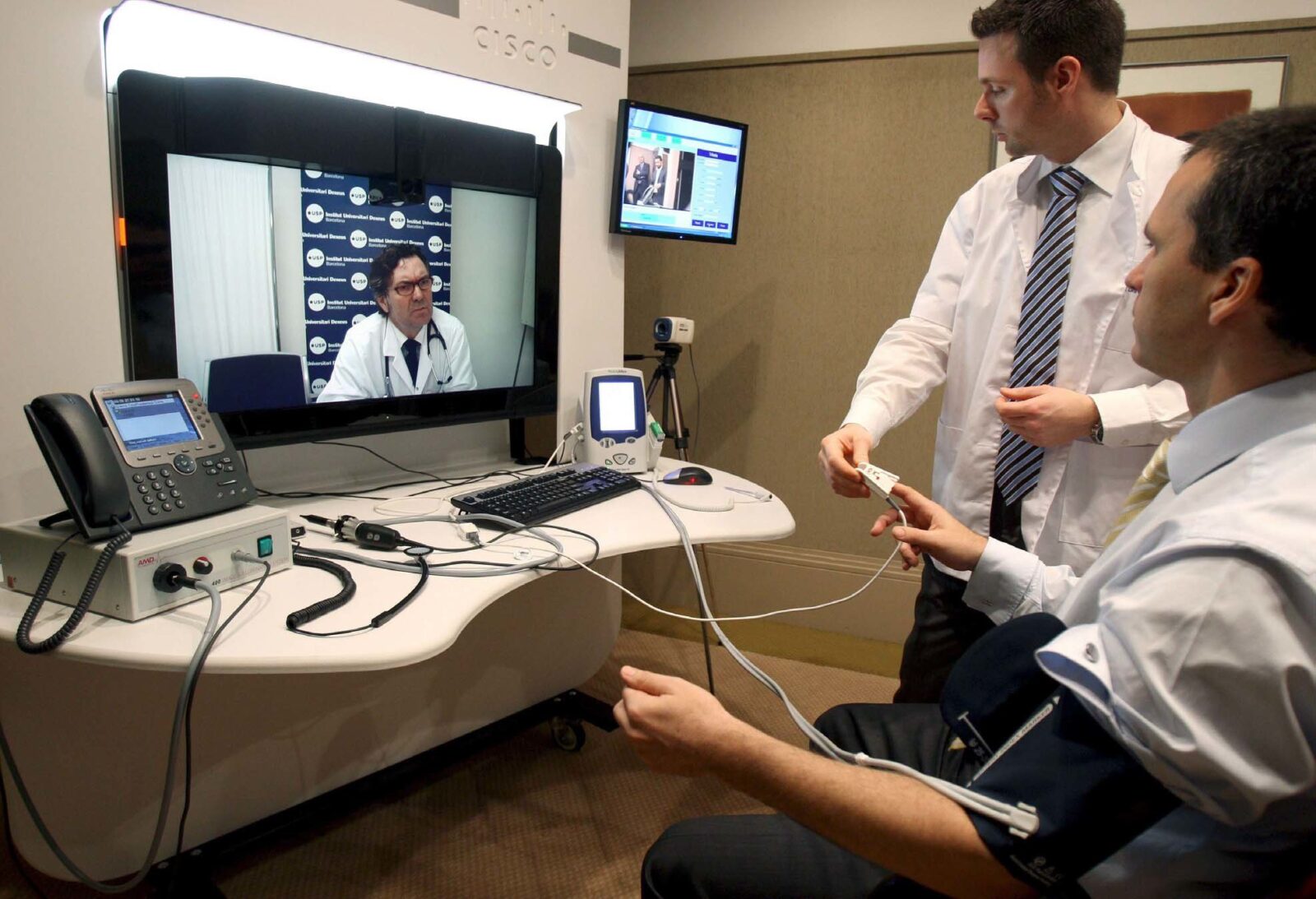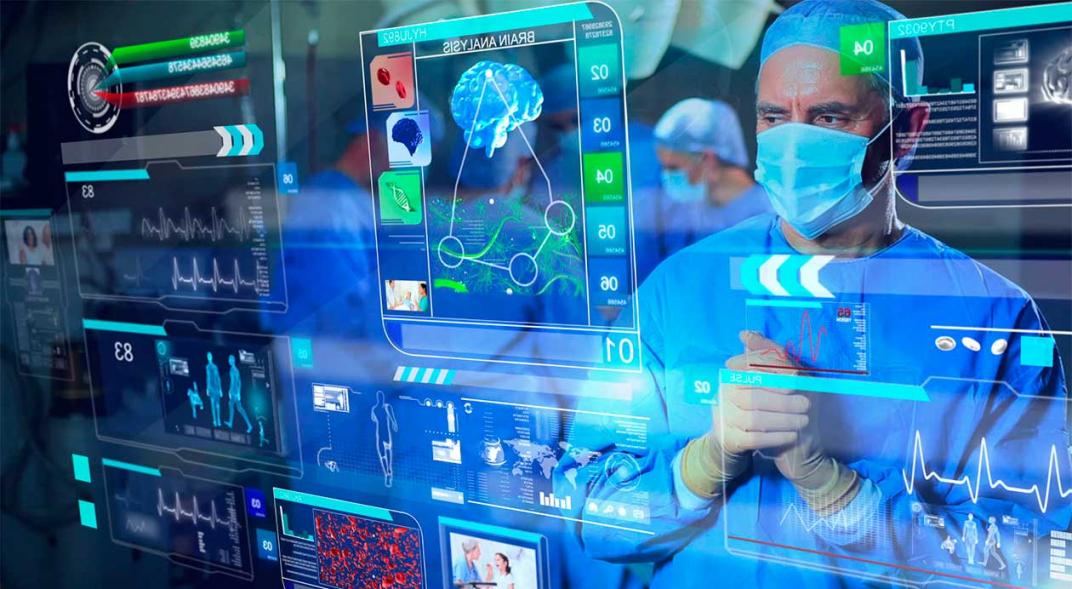Digital disruption offers an unprecedented opportunity to gain a competitive advantage. Recent Cisco research shows that most executives believe that four out of ten companies consolidated by industry will fail in the next ten years if they do not complete the digital transformation.
In this way and for the purposes of this article I would like to focus on the health sector, which bases knowledge and is characterized by an intensive use of information. For this reason, the irruption of information and communication technologies should have an even greater impact than in other sectors not so dependent on data, opening the door to multiple disruptive innovations that allow us to evolve towards models based on the needs of patients and professionals. In fact, the health sector has not been transformed, and suffers a considerable delay in relation to other sectors, such as banking, logistics, tourism, audiovisual ... Experts say that, if we compare it with other service sectors , it is about 10 years behind.
A correct application of information technologies, both in the field of prevention and in care or research, taking advantage of the excellent health system we have in Costa Rica and most countries in America, can change the system health and improve the well-being of patients, in addition to making it sustainable. For this, the digital transformation must be urgently tackled.
Any healthcare system that aspires to improve or remain among the best in the world must have the necessary vision and determination to introduce new technologies and the changes they imply in the few flexible healthcare and social systems.
In a process of digital transformation of an organization, technology in itself is rarely the greatest challenge, especially considering that, in the health sector, technology is already present, in the form of electronic medical records, electronic prescription, telemedicine, surgical robots, and even work with machine learning systems has already begun. Technology is the facilitator of process transformation, rather than the root cause of the transformation itself.
The 3 key aspects to take into account for the transformation of the health sector
In order to successfully drive and implement digital transformation in any organization, there are three key aspects: people, processes and technology.
People: The ultimate success of digital transformation depends on people. It is considered the most important factor, since the essence of this change is cultural, and any cultural change has to start with people. A digital transformation will only occur if the right people are involved in the process and if everyone agrees with the changes that will take place across the organization.
Technology: Many times we seek to apply technology to existing processes, which is a wrong approach. It is advisable to first analyze the processes and find ways to optimize them. By looking for efficiencies in both processes and tools, in the long term, the benefit will be much greater.
The processes: Digital transformation requires a change in the entire organization, in the way of thinking, working and providing services to users. The recommendation is to work with the staff, obtaining the appropriate participation and the ideal team, and then planning the processes to align them with the strategic objectives.

Managing the main health asset
Data is the main asset of health systems. Its accessibility, availability, validity, integrity, accuracy and exhaustiveness largely determine the state of health and well-being of the population. They are not only needed to provide quality care, but also to ensure scientific progress resulting from research.
The life cycle of data (information and knowledge) is based on and begins with the collection of information, in the clinical history - a fundamental part of guaranteeing a quality health system - and ends with the transfer of the new knowledge generated. for research into healthcare practice.
In this way, several discussions are opened about which are the lines of action that must be further developed to achieve success in this type of health process; among which we can mention:
- It is necessary to reach a consensus for the dissemination of the standards to be used to return and provide your information to the citizen so that it is treatable and interpretable.
- Legislation and regulations to be able to obtain in an easy, safe and standard way the own information, resulting from the attention.
- Trusted platforms that provide citizens with custody, access and valuable services of all kinds over their information.
The benefits that digitization will bring to the health sector are indisputable, and should not hinder clinical research either, but only if citizens, with the collaboration of public and private systems, are the protagonists of said governance. In this context, it is essential that public and private systems are really custodians and guarantors of health data in the possible relationships that may be established for clinical research and care.
Health-related data is highly sensitive, can contain information about the most intimate aspects of our lives and can expose us to multiple risks, for example, being discriminated against or even manipulated. Consent, then, by itself does not seem sufficient. In this sense, it is necessary that the privacy of the patients is protected, in addition, with the anonymization of the data, that is, the elimination of any information that allows identifying the person, which will be essential to continue on the route of digital transformation successfully.

Success stories
It is to consider the success cases in this route traced by the digitization of the health sector, and for this reason I want to consider as reference some success cases achieved in other countries.
In 2017, Japan reinforced the Personal Information Protection Act (APPI), in force since 2003. This law is homologous to the regulation established in the European Union for data protection (GDPR). Through the introduction of this law, the citizen is the one who authorizes the management of their data, since it grants permission for their use in every circumstance. This implies that the data is stored in a centralized database that external agents can access if authorized. The benefits of this law focus on the fact that the interested agent does not have to request individual authorizations for each file, which encourages data exploitation. This law protects data, and in turn, allows efficient use of data for research and innovation in the health sector.
In early 2000, the U.S. Veterans Administration launched a telemedicine program for chronic patients through which they could be followed by remote healthcare professionals. The patients of the program were provided with the necessary devices and tele-monitors with peripheral devices, digital cameras and telephones, among others, were installed in the home. This program is considered an international leader and pioneer, since it is one of the most widespread telemedicine systems. In addition, it is based on a comprehensive health care system, including all therapeutic areas and diseases.
Denmark has one of the most comprehensive and pioneering Electronic Recipes internationally. This digital tool allows healthcare professionals to prescribe, control and monitor the drug. In addition, patients can consult the pharmacy where the drug is available and thus choose which one to go to. Currently, this system is available in all centers, approximately 100% of them have access to the Electronic Prescription, being a completely digitized and unified system that also allows for the control of drug dispensing.
Estonia created an electronic card (DNI) that includes all citizen data, including medical records. The information is stored on a platform owned by the citizen and on which he himself grants authorization for access by external agents. The DNI allows creating the complete patient life history, including all the health data, promoting efficiency in data management and instant access. The introduction of the electronic DNI, available to all citizens and its global implementation throughout the system, has allowed all citizen data to be digitized, including health data.
On the other hand; Norway stands out for the high level of digitization throughout the country. Digital Health Record (HCD) is a tool used by healthcare centers, including primary care centers, where 99% of healthcare professionals use HCD. This country has been one of the pioneers in systematically sharing information from citizens with health professionals through the Summary Medical Record. In Costa Rica we can say that through EDUS some steps have been taken in this regard, however; Much work is lacking in the digitization of health processes.
Five predictions for the health sector by 2025
All public institutions and private companies in the sector must take action and bet on digitization, which is critical and that the delay in its application means losing a competitive advantage.
The COTEC Foundation for Innovation (Spain) has indicated in one of its reports, the five predictions about the health sector for 2025 are:
- The home will become the usual place for routine health care / monitoring. And we are already seeing this rapidly with the COVID-19 pandemic.
- Hospitals will be reserved for specialized treatment, trauma and emergencies.
- Many of the doctor-patient contacts will be made virtually and will be informed with evidence from the real environment.
- More than 70% of the world population will make a consultation by video connection.
- In the coming years, individuals will be better informed about their genetic profile, their current health and possible future diseases.

I would like to close this article by pointing out that the digitization of health is the ecosystem of application of information technologies. This application generates a disruptive change in the sector, whose changing needs see in these new technologies the levers of change necessary to achieve safety, efficiency and personalization in the improvement of healthcare processes, and in addition to making the healthcare system sustainable.
WOULD YOU LIKE TO MAKE AN ADDITIONAL COMMENT TO THIS ARTICLE?
